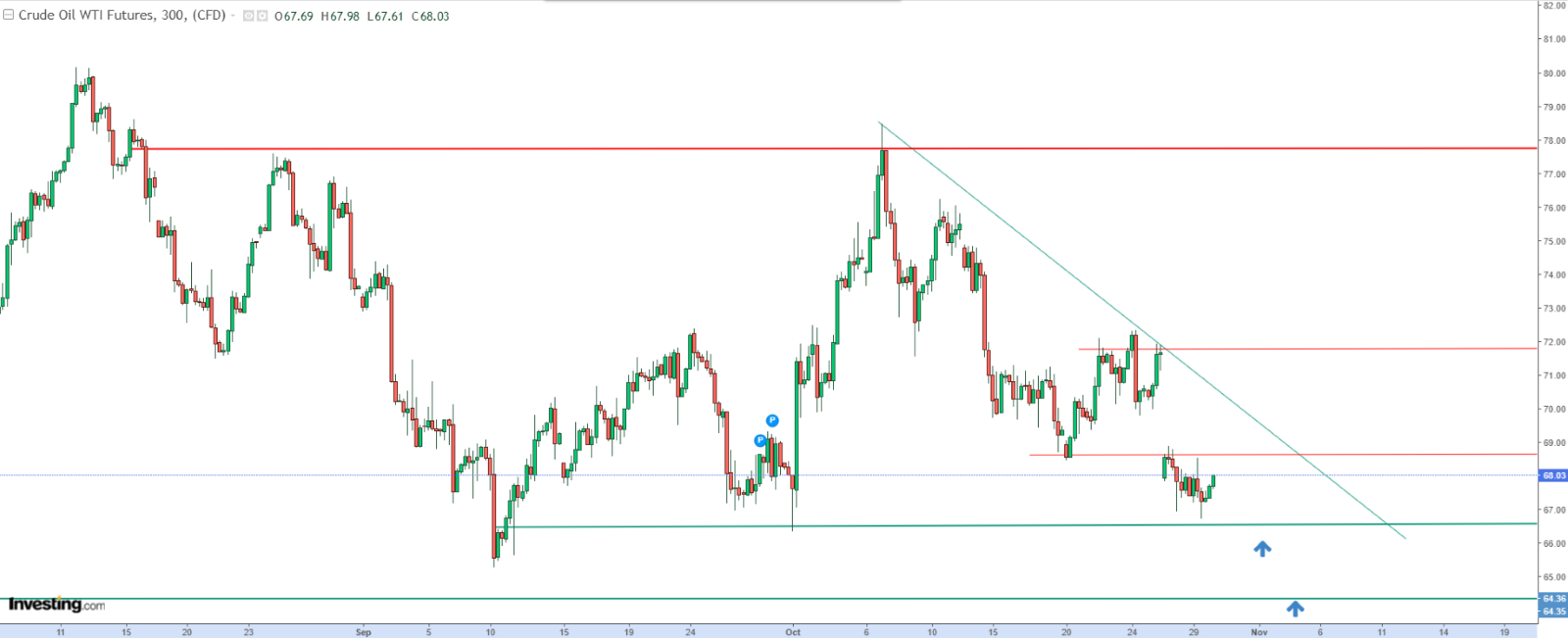Crude Oil: Geopolitical Risks, OPEC+ Discord May Spark Potential Plunge Below $67
2024.10.30 06:18
-
Crude oil traders brace for potential volatility amid geopolitical tensions and OPEC+ disagreements.
-
Key support and resistance levels may guide near-term trading strategies amid shifting supply risks.
-
Staying nimble could prove essential as fresh headlines from the Middle East and OPEC+ loom large.
-
Looking for actionable trade ideas to navigate the current market volatility? Unlock access to InvestingPro’s AI-selected stock winners for under $9 a month!
prices are caught in a whirlwind, as fresh geopolitical tensions and OPEC+ friction set the stage for potential volatility.
For traders, navigating these turbulent markets requires understanding the pressures at play—pressures that seem poised to push oil prices even lower.
However, as a critical support level nears, a case for a breakdown below key support at $67 is looking likely.
Middle East Tensions and Market Reactions
In recent days, geopolitical events in the Middle East have driven a stark shift in oil valuations. Israel’s restrained response to Iranian missile provocations, which avoided a direct impact on Iran’s oil infrastructure, signaled a potential de-escalation.
However, the tense situation on the Tehran-Tel Aviv line keeps traders on edge, with further military actions remaining a possibility. In response, crude prices tumbled over 6% this week, a clear indicator of market jitters.
Iran, a top player with nearly 4 million barrels per day in production, makes up a sizable portion of global output, while the broader Middle East accounts for around a third of the world’s oil supply.
Any escalation in this region disrupts supply chains, sending shockwaves through the markets.
Discord in OPEC+: Is Saudi Patience Running Thin?
OPEC+ has its own internal fractures, which could add fuel to the downward trend in oil prices. At the recent OPEC+ meeting, Saudi Arabia issued a stern warning to members, particularly Iraq, urging compliance with production limits.
Should non-compliance continue, Saudi Arabia may boost its own output—potentially unleashing an additional 9 million barrels per day into the market.
This scenario could drive prices below $60 per barrel for both WTI and , with decisions expected at the November meeting.
Technical Pressure on WTI Prices
WTI crude prices have recently broken below the $70 per barrel mark, facing support near $67. Should this level fail, a dip toward the long-term low at $64 per barrel could be imminent.
Conversely, if demand can regain strength, a short-term resistance at $72 offers a glimmer of hope for a rebound.

As the November OPEC+ meeting and Middle East developments unfold, crude traders will want to stay alert to both technical levels and geopolitical headlines.
These shifting factors highlight the need for agile strategies to capitalize on rapid moves, whether the market turns up or continues its slide.
***
Disclaimer: This article is written for informational purposes only; it does not constitute a solicitation, offer, advice, counsel or recommendation to invest as such it is not intended to incentivize the purchase of assets in any way. I would like to remind you that any type of asset, is evaluated from multiple perspectives and is highly risky and therefore, any investment decision and the associated risk remains with the investor.








